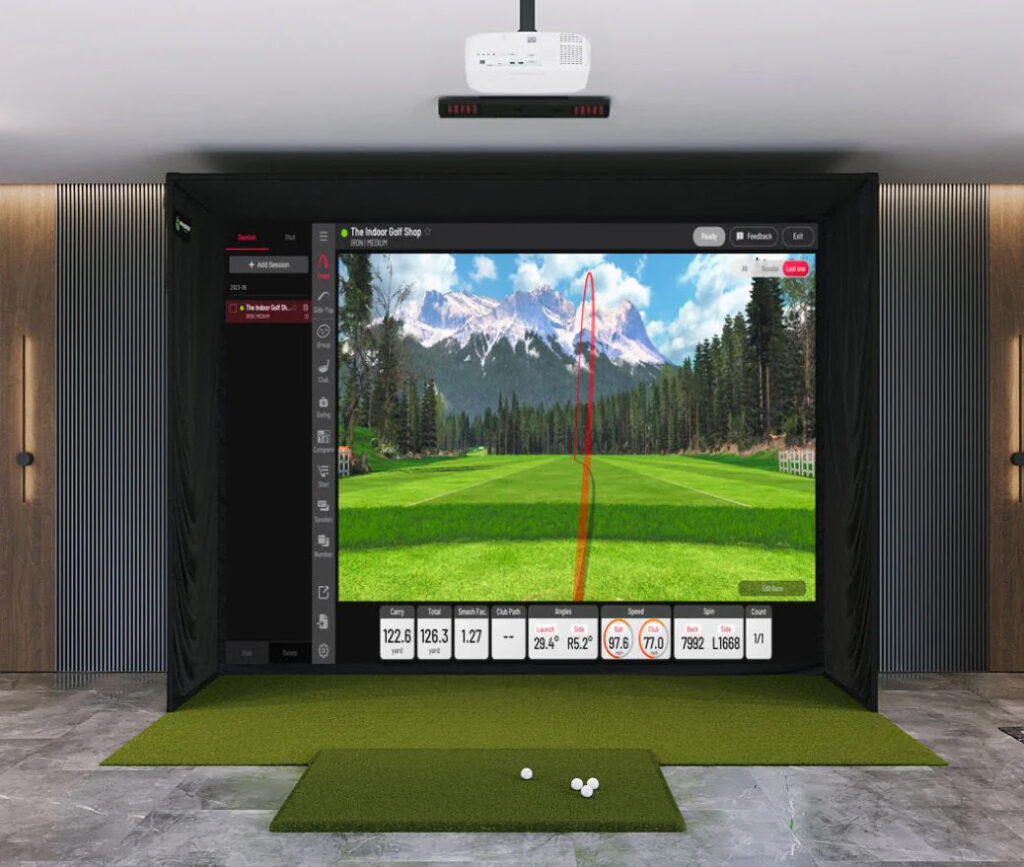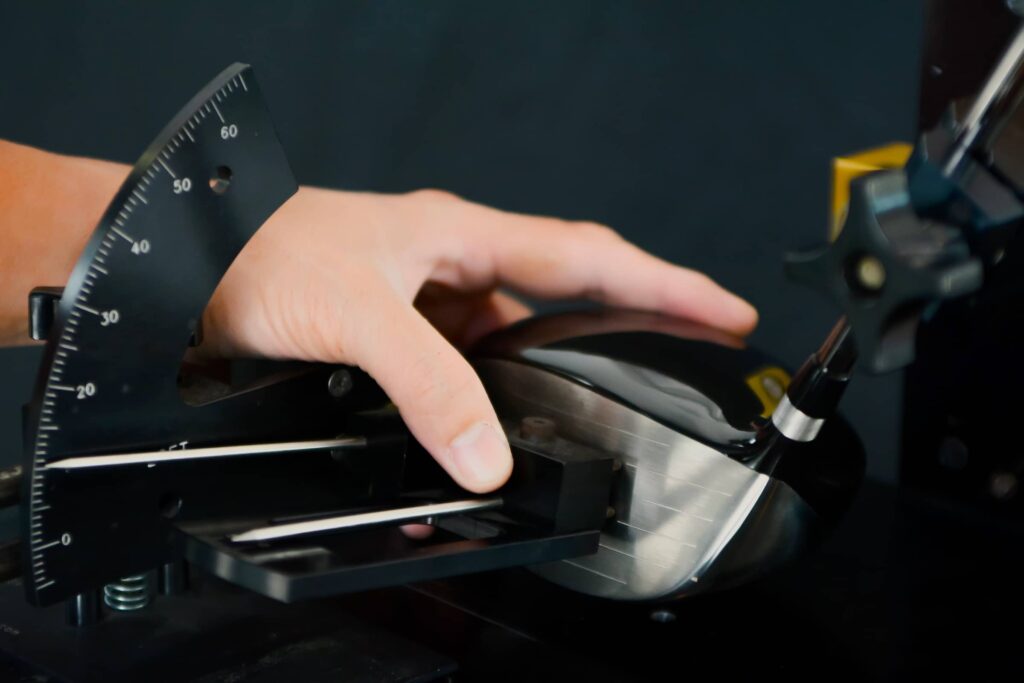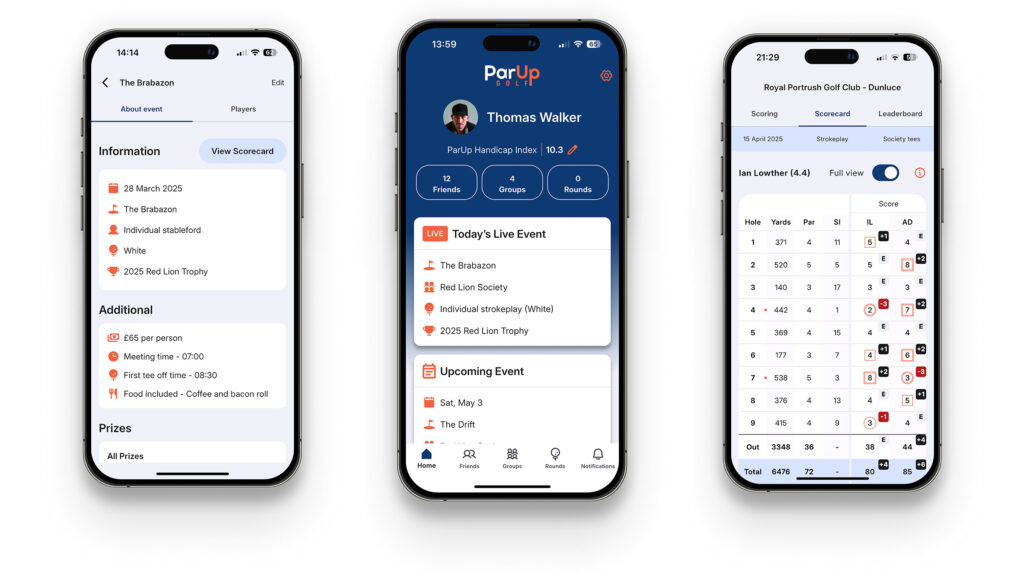Some of us dreamt of flying cars or a quick rocket ride to work, while the true visionaries among us had something else in mind: a way to play a full round of golf without setting foot outside.
Today, indoor golf simulators bring this dream to life with stunning realism, making home golf more than just a novelty.
With tech advances and companies like The Indoor Golf Shop leading the way, the industry is seeing a boom in home installations.

As more golfers bring simulators into their living rooms, garages, or even basements, the experience feels closer to the real game, only with added convenience.
According to Rene Delgado, founder and CEO of The Indoor Golf Shop, the whole setup can be tailored to any home and installed by professionals or the do-it-yourselfer alike.
And while it’s easier than it sounds, Delgado emphasises a few things to keep in mind when setting up a sim at home.
Finding the Right Space and Ceiling Height
One common concern for new buyers is the ceiling height. “One of the most common questions we get is about ceiling height,” says Delgado.
“Sometimes people have nine- or 9.5-foot ceilings and ask if they can swing in this area. There’s no one-size-fits-all answer.
People have different swing types and heights. So, we ask them to swing a club slowly to ascertain whether or not it’s possible.”
In fact, the overall dimensions of your potential sim room are key. Even though your room may seem wide and deep enough, remember that a sim is part of a larger enclosure that needs to fit in that space.
So you may need more space than you think. Too small and you may not be able to swing the club properly.
Then there are the components to avoid skimping on. The hitting surface, for instance, needs to be durable and have good padding underneath.
A typical driving range mat with little padding can be very violent on the joints.
“You want to get something realistic, that has a fairway feel but is also forgiving and allows you to swing down and through effortlessly,” says Delgado.
In addition to ceiling height, the overall room dimensions play a crucial role. Golf simulators typically require an enclosure to capture ball movement and protect the surroundings.
So, while your room might seem spacious, the simulator setup demands room for both the swing and the equipment itself.
Key Components: Hitting Surface, Launch Monitor, and Projector
When building the ultimate simulator, some elements are worth the investment. The hitting mat, for instance, is one component where quality matters.
“You want to get something realistic, that has a fairway feel but is also forgiving and allows you to swing down and through effortlessly,” Delgado explains.
He recommends a durable mat with proper padding to protect both your joints and your floors.
Next, there’s the launch monitor – essentially the brains behind the simulator. For those setting up a permanent indoor space, a ceiling-mounted unit is a good choice as it stays out of the way and works well for both right- and left-handed players.
For portable options, Delgado suggests Doppler-based (radar) units, which can transition smoothly from indoors to outdoors.
Then, there’s the projector, often the one component that buyers wish they’d upgraded.
“Switching from an $800 projector to a $2,000 projector is a night-and-day improvement with a lot more lumens, pixels per frame, and overall flexibility,” says Delgado.
A high-quality projector enhances the realism of the simulator, making courses like Pebble Beach look and feel true-to-life.
Installation Options: DIY or Professional
While setting up an indoor golf sim can seem overwhelming, The Indoor Golf Shop aims to simplify the process.
“A lot of people are intimidated by the process and think it’s going to be overly complicated,” says Delgado.
“But at least with our simulator box-type solutions, everything we manufacture and design is meant to be set up and installed by a customer in under an hour.”
For those who want a custom solution, The Indoor Golf Shop offers full-service installations, where everything is tailored to the homeowner’s specific space.
This top-tier option typically costs between $35,000 and $60,000 and includes custom designs, integrated subflooring, and even wall framing.
As Delgado explains, it’s a high-end setup that includes everything from 3D renderings to on-site installation.
With the growing popularity of at-home golf simulators, there’s never been a better time to bring the game indoors.
Whether you’re looking for a simple DIY setup or a luxury installation, companies like The Indoor Golf Shop make it easier than ever to create your own golf haven at home.



